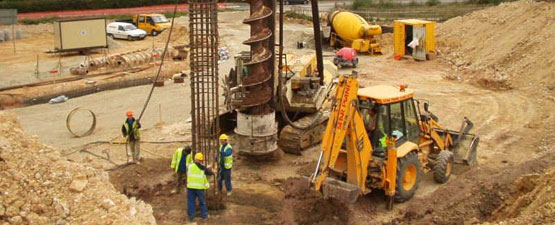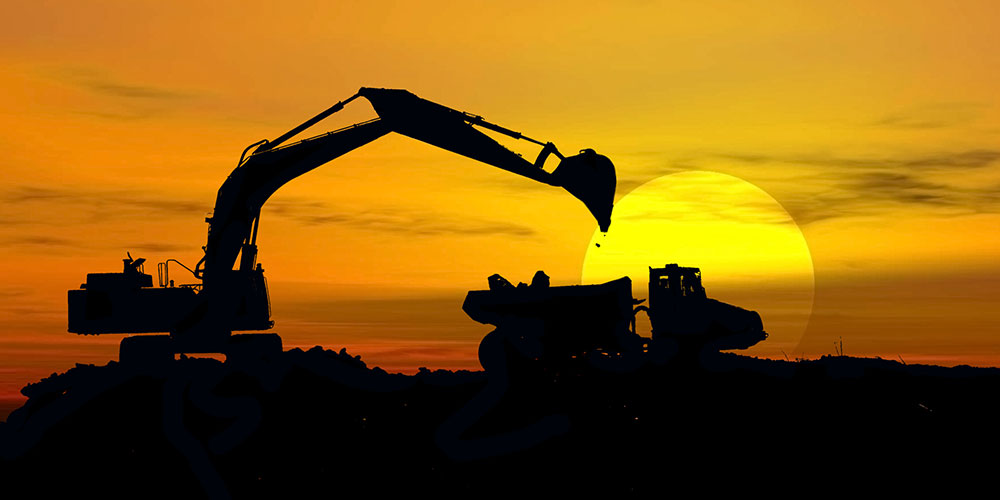Specialized Geotechnical Works for Sustainable Building And Construction Solutions
Wiki Article
Exactly How Consulting Engineers Enhance Geotechnical Engineering Projects: Insights Into Their Know-how, Methodologies, and Collaborative Approaches
Consulting designers are essential in improving geotechnical engineering projects, applying their specialized expertise to navigate the intricacies of subsurface conditions. Their joint approaches foster communication among diverse job stakeholders, eventually shaping the job's trajectory.Role of Consulting Engineers
The proficiency of seeking advice from designers in geotechnical design is fundamental to the successful implementation of construction jobs. These professionals play a pivotal role in assessing dirt and rock residential or commercial properties, which are crucial variables affecting design and construction decisions. By conducting extensive site examinations, consulting engineers collect necessary data that notifies the style process, guaranteeing jobs are developed on stable and suitable ground.Consulting designers likewise give indispensable insights into threat management (geotechnical geologist). They identify possible geotechnical threats, such as landslides, soil liquefaction, and negotiation problems, making it possible for stakeholders to apply efficient mitigation techniques. Their experience help in enhancing foundation layouts, which can bring about considerable cost savings and boosted safety
Additionally, consulting engineers work as a vital web link between project proprietors, architects, and service providers. Their capability to translate complicated geotechnical data into workable referrals fosters collaboration and helps with notified decision-making throughout the job lifecycle. This multidisciplinary strategy not only boosts project performance however additionally guarantees conformity with regulative requirements and best methods.
Secret Methods in Geotechnical Design

One main technique is website investigation, which involves conducting field examinations and laboratory analyses to gather data on subsurface problems. Strategies such as Standard Infiltration Testing (SPT) and Cone Infiltration Testing (CPT) are commonly made use of to assess soil stratigraphy and stamina. Additionally, geophysical approaches, consisting of seismic and electrical resistivity studies, supply non-invasive ways to assess subsurface features.
An additional crucial methodology is mathematical modeling, which allows engineers to replicate various circumstances and predict how soil-structure communications will behave under various loading problems. Finite Component Analysis (FEA) is a typical technique utilized in this context.
Moreover, the layout of structures, preserving structures, and earthworks counts greatly on these techniques - geotechnical geologist. By integrating innovative analytical tools with area data, speaking with engineers can establish customized solutions that attend to specific job difficulties, ultimately adding to the stability and safety and security of building and construction jobs
Significance of Dirt Evaluation
Soil analysis acts as a fundamental component in geotechnical engineering, supplying crucial insights right into the physical and chemical residential or commercial properties of dirt needed for reliable building preparation. Comprehending dirt characteristics is essential for determining its load-bearing capacity, water drainage actions, and possibility for negotiation or instability. Thorough soil examinations, including sampling and research laboratory screening, assistance determine specifications such as dirt type, moisture content, thickness, and shear strength.
These evaluations notify the choice of appropriate building and construction strategies and materials, inevitably affecting job security and long life. Cohesive dirts may need various foundation designs compared to granular dirts, necessitating customized engineering services. Additionally, soil evaluation aids in recognizing contaminants that might posture risks to human health or the setting, enabling the advancement of mitigation approaches.
Including soil evaluation right into the very early stages of project growth aids to minimize unforeseen challenges, making why not try here sure that designers can prepare for and address prospective issues before they rise. By establishing an extensive understanding of the website problems, speaking with engineers can maximize layout performance and lower expenses, thereby boosting the general success of geotechnical engineering jobs.
Collective Methods in Projects
Effective geotechnical projects commonly rest on collective techniques that bring together varied competence from various self-controls. Effective cooperation amongst getting in touch with engineers, rock hounds, ecological scientists, and construction specialists is critical for attending to complicated difficulties and enhancing project outcomes. By leveraging the distinct skills and understanding of each team member, tasks can take advantage of a holistic understanding of the website conditions, regulative needs, and engineering restrictions.Routine interaction and interdisciplinary conferences promote the sharing of understandings and foster a culture of team effort. These directory joint efforts allow the identification of prospective risks early in the project lifecycle, enabling prompt reduction techniques. Integrating responses from stakeholders, including regional communities and governing companies, makes sure that all perspectives are considered, improving job acceptance and conformity.
Furthermore, the integration of sophisticated technologies, such as Geographic Information Equipment (GIS) and Structure Info Modeling (BIM), more improves cooperation. These devices enable for the real-time sharing of data and visualization of geotechnical problems, advertising educated decision-making. Eventually, a collaborative method not only simplifies project execution yet likewise lays the foundation for ingenious services to complicated geotechnical engineering difficulties.
Influence on Project Results

Consulting engineers employ advanced methodologies such as danger assessment and anticipating modeling, which boost the accuracy of task forecasts. Their capacity to integrate ingenious modern technologies, like geotechnical instrumentation and data analytics, better refines the style and construction processes. Because of this, projects experience enhanced performance, decreased expenses, and decreased delays.
Additionally, fostering effective interaction and cooperation among staff member boosts problem-solving capabilities. When difficulties emerge, a united front enables quick recognition of remedies, avoiding prospective obstacles. Full Report Ultimately, the collective initiatives of consulting engineers contribute to higher high quality end results, making certain that projects meet both regulative requirements and client assumptions.
Final Thought

Report this wiki page